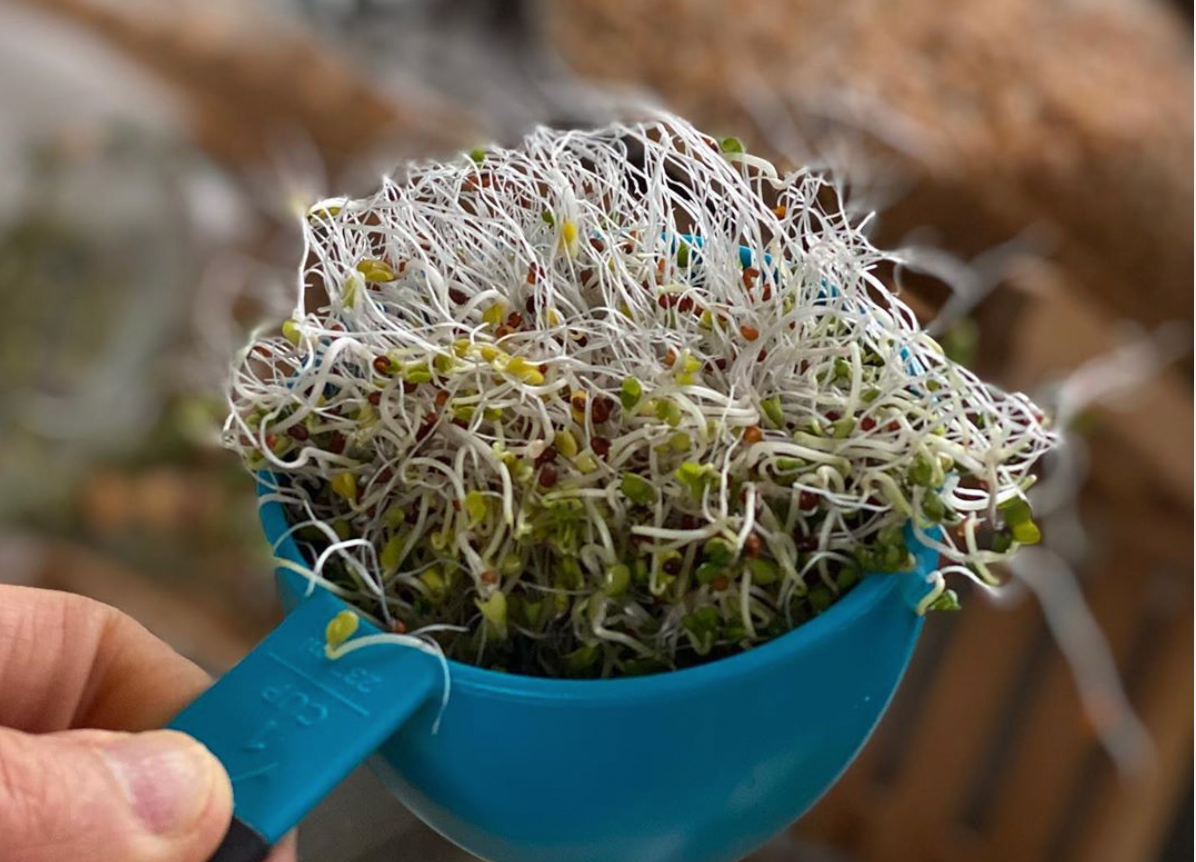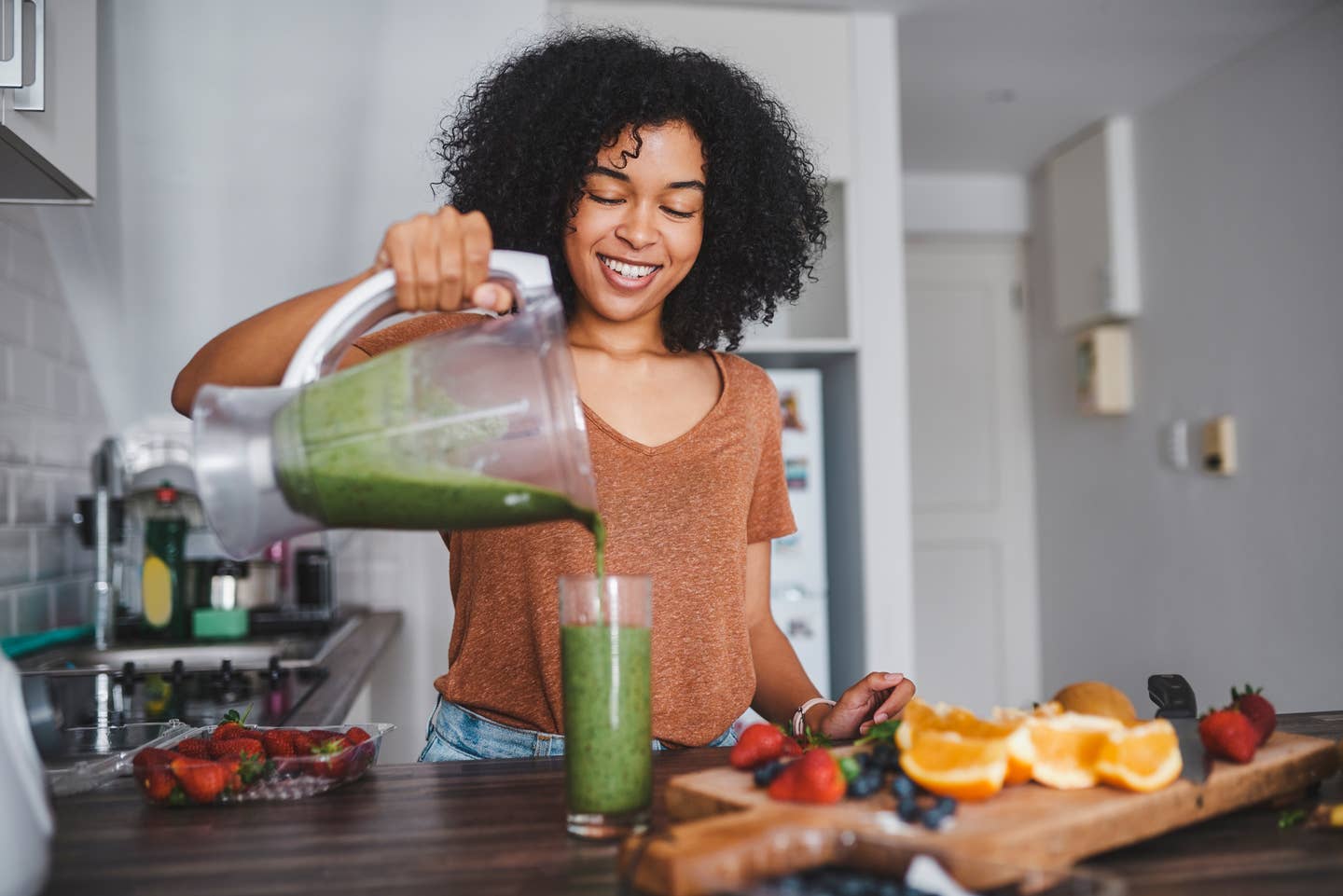
Doug Evans on the Health Benefits of Sprouting and Why You Should Start
Doug Evans could be called "the Sprout Guru." As a long-time vegan and author of the recently-released book The Sprout Book: Tap Into the Power of the World’s Most Nutritious Food, Evans is obsessed with sprouts. I caught up with him (over the phone, of course) while he shelters-in-place at his desert oasis in Wonder Valley Hot Springs to talk about why sprouts are the most underrated nutritious food that deserves your attention.
With a foreword by Joel Fuhrman, M.D., and a healthy dose of expert advice throughout the pages, it seems like there isn’t a medical professional around—plant-based or not— that isn’t singing the praises of the tiny-yet-mighty sprout. And now, Evans is striving to bring this knowledge to the masses with his book, which delivers the what, when, where, why, and how of sprouting, along with 40 delicious recipes to help integrate them into your daily diet.
Here, he shares with The Beet his vegan journey, why he believes sprouts deserve more recognition and his advice for beginners who are just getting started sprouting.
Q: How long have you been vegan? When on your vegan journey did you discover the power of sprouts?
A: I’ve been vegan for 21 years without compromise or regret. I had an initial 2-week transition from eating street food and fast food to being raw vegan for about 17 years. After that, I introduced cooked food back into my diet and I now consider myself strictly “whole food vegan”.
I’ve been sprouting for my entire vegan journey— I sprouted wheatgrass before I even went vegan. I didn't think much about it, but when I moved to Wonder Valley Hot Springs I found myself off the water grid because I’m not only in a desert but a food desert 1 hour and a quarter away from the nearest Whole Foods. Without a whole lot of healthy food options, sprouting was what I could do to become food sovereign.
Q: We hear a lot about the nutritional benefits of different trendy “superfoods” or leafy greens: Why are sprouts actually the most nutritious foods on the planet?
A: Greens of all varieties are great. But when you take a few steps back to the seed, whether it’s kale, radish or broccoli--and sprout it--nutrients are multiplied exponentially, making sprouts the champion of superfoods.
Broccoli sprouts, with 20 to 50 times the anticancer component sulforaphane of mature broccoli, have gotten huge recognition as a superfood. There are over 150 peer-reviewed scientific journals citing their antioxidant compounds and potential for treating autism and other conditions.
That got me thinking about all the sprouts that weren’t so well researched, that weren’t the obvious superfoods. I got more and more curious, and that was what drove me to dive deeper and write the book. I set up a lab and I started to sprout systematically from A to Z. Jars, bags, trays, I tried out all different ways to sprout. What I came up with was a powerful way to grow protein, fiber, micronutrient, and antioxidant-rich organic produce from the comfort and safety of your home. That was really powerful.
Q: Why are sprouts an economically-viable choice?
A: If you buy a cold-pressed juice in the store instead of making it at home, you're not saving any money because of all the fruits and vegetables and labor that go into making the beverage. With sprouts, the difference is a real wakeup call. Sprouts are sold in most health food stores for somewhere in the range of $5 a pack for what costs 50 cents or less to sprout at home. Healthy food can be expensive, but sprouts are the exception, making sprouting a path to food equality.
Q: You used to be the CEO of Organic Avenue that pressed a lot of juice— have you ever juiced sprouts?
A: If someone really wanted to megadose the nutrients within sprouts, juicing sprouts is an incredible way to get concentrated nutrients. Because sprouts are so small you get a relatively low yield, like what you get with a wheatgrass shot. It takes a lot of wheatgrass to make a little shot, but that shot will be potent. When I have an abundance of sprouts, I will juice them or freeze them and then blend them so I'm getting the fiber too.
I like to eat all different types of sprouts. They’re versatile in that you can add them to just about anything—smoothies, salads, cereals, snacks, and you can season them with all sorts of herbs and spices. My personal favorite way to flavor them is to sprinkle them with curry powder because you’re getting a combination of a dozen different spices from cayenne to turmeric.
Q: Why is sprouting a timely topic considering the nation-wide quarantines happening right now?
A: Right now we have fast-food workers and grocery workers starting to strike and delivery workers who are demanding hazard pay. The safest thing to do is hunker down at your home and sprout. You can get every nutrient with the exception of vitamins D and B12 from sprouts that you can grow at home.
Q: Do you have any tips you can share with beginners who may want to sprout but don’t know where to start?
- Always use organic seeds that were designed for sprouting and that have been tested for pathogens. Otherwise, they could be sprayed with pesticides. Organic sprouting seeds are the creme de la creme of seeds: they’re the freshest seeds with the highest germination rate. A High germination rate is important because if the seeds don't germinate they could mold. My two favorite sites to buy seeds are Sproutman and True Leaf Market.
- Try small amounts of different seeds to test what works for you. Although sprouting is simple, it's easy to make little mistakes, and it’s always better to do so quickly with little waste. First, try a tablespoon or so of seeds. You’ll know in 2 or 3 days if you’ve gotten the hang of it.
- Remember to let your sprouts dry. When you’re done sprouting, it's very important to let them dry out for several hours before storing them in the refrigerator. If you put them into the refrigerator wet, they could get moldy.
- Start off with broccoli or alfalfa seeds, which are really easy to sprout, then move to legumes like lentils, peas and mung beans. Sprouting legumes decreases their lectin content and makes them overall incredibly nutritious.
To learn more about the how-tos of sprouting, The Sprout Book contains everything you need to know about nutritional benefits as well as the best practices. It also contains 40 delicious recipes, to help integrate sprouts into your daily life, such as the delicious hummus appetizer below:
New Classic Hummus
Alive with sprouted chickpeas and zucchini for added veggie goodness, this will forever change your conception of hummus. Roll some into a veggie wrap or grab a carrot stick and have at it!
Makes about 3 cups
Ingredients:
- ¼ cup fresh lemon juice, or to taste
- 2 garlic cloves, chopped
- 1 cup (about 2 ounces) mature mung bean sprouts
- 1 medium zucchini (about 6 ounces), including stem, chopped
- ½ cup tahini
- 1 cup (about 4 ounces) chickpea sprouts
- ½ teaspoon ground cumin
- 1 teaspoon sea salt, or to taste
- ½ teaspoon freshly ground black pepper, or to taste
- ¼ cup extra-virgin olive oil, plus more for drizzling
- 2 tablespoons chopped fresh parsley
- Sprinkle of paprika
Instructions
- In a high-speed blender, combine the lemon juice, garlic, mung bean sprouts, zucchini, tahini, chickpea sprouts, cumin, salt, and pepper in that order and blend, starting on low speed and working your way up to high, until silky smooth, 3 to 4 minutes, scraping down the sides as needed and adding water if the mixture is too thick. If the blender starts to get hot, stop to cool it for a couple of minutes.
- Add the oil and blend on low speed for about 30 seconds, until well combined. Add the parsley and pulse it in.
- Taste and add more lemon juice, salt, and/or pepper as needed.
- Transfer to a bowl or container and, if you have time, let sit for about 30 minutes to allow the flavors to blend, then taste again and adjust the seasonings as needed.
- Serve topped with a drizzle of oil and a sprinkle of paprika. The hummus will keep, covered tightly, for up to 5 days in the refrigerator.
From The Sprout Book by Doug Evans. Copyright © 2020 by the author and reprinted by permission of St. Martin’s Publishing Group.
More From The Beet






